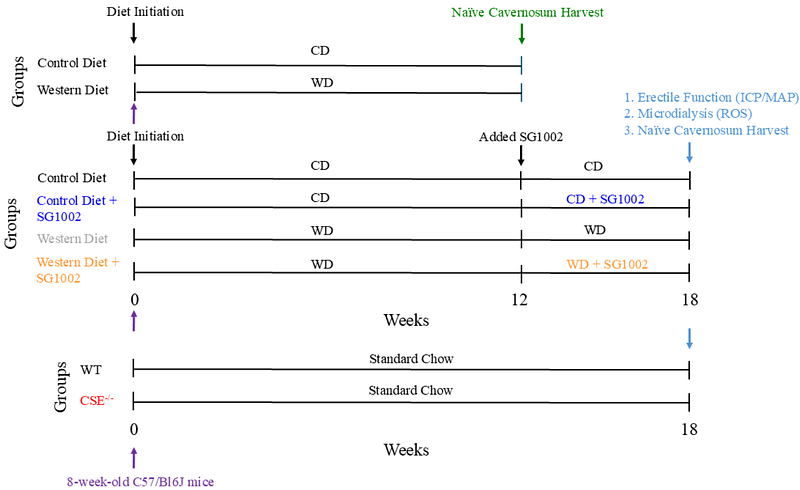Hydrogen sulfide protects erectile function through stimulation of antioxidant defense in the corpus cavernosum

Hydrogen sulfide protects erectile function through stimulation of antioxidant defense in the corpus cavernosum
Azeez, T. A.; Rhein, P. R.; Pierre, C. J.; Ihrig, C. M.; La Favor, J. D.
AbstractObesity is a major risk factor for erectile dysfunction, whereby excess reactive oxygen species (ROS) in the corpus cavernosum have been implicated as a causative factor. Hydrogen sulfide (H2S) is an endogenous gasotransmitter with vasodilatory and antioxidant properties. The objectives of this study were to determine the influence of H2S on erectile function, penile ROS, and expressions of endogenous antioxidant genes and proteins in the corpus cavernosum. These objectives were tested by 1) comparing wild type mice to mice deficient in cystathionine {gamma}-lyase (CSE-/-), a major endogenous source of H2S; and 2) by feeding wild type mice a control diet or high-fat, high-sucrose Western style diet (WD) for 18 weeks, with subgroups treated with and without the H2S prodrug SG1002 for the final 6 weeks of the dietary intervention. Erectile function was assessed by cavernous nerve-stimulated intracavernous pressure measurement, penile interstitial ROS was measured with a microdialysis approach, and cavernous gene and protein expression assessed by qRT-PCR and western blot, respectively. Erectile function was impaired in CSE-/- mice and following the WD, which was significantly improved in WD mice treated with SG1002. Penile ROS levels were increased in CSE-/- mice and following the WD, which were suppressed in WD mice treated with SG1002. The following genes were commonly decreased in CSE-/- mice and increased by SG1002 treatment: Nqo1, Gclc, Gstm1, Gpx1, Gpx4, Hmox1, Txnrd1, and Prdx3. Txnip was reciprocally increased in CSE-/- mice and decreased by SG1002 treatment. These data suggest that H2S positively influences erectile function and penile free radical balance, likely through augmentation of the glutathione and thioredoxin endogenous antioxidant systems.